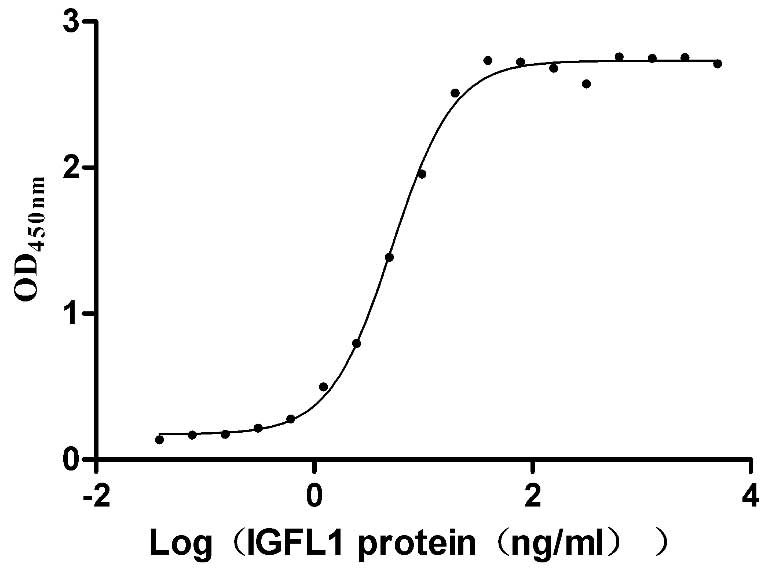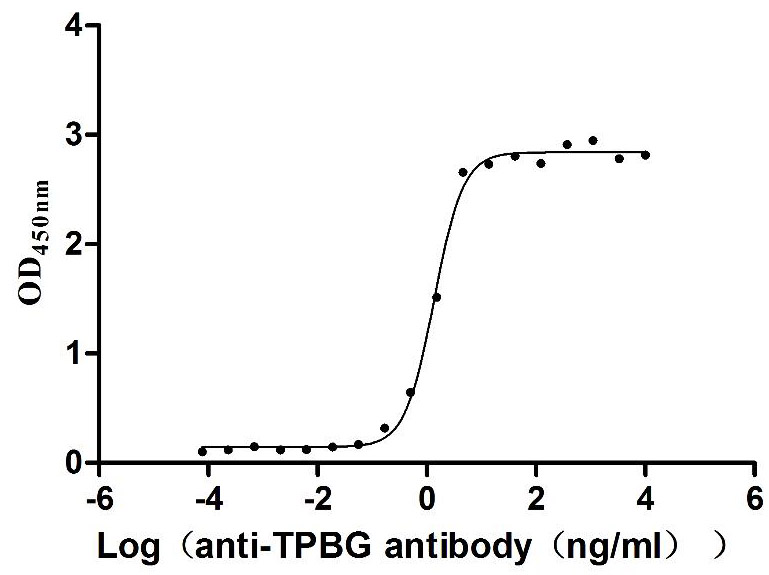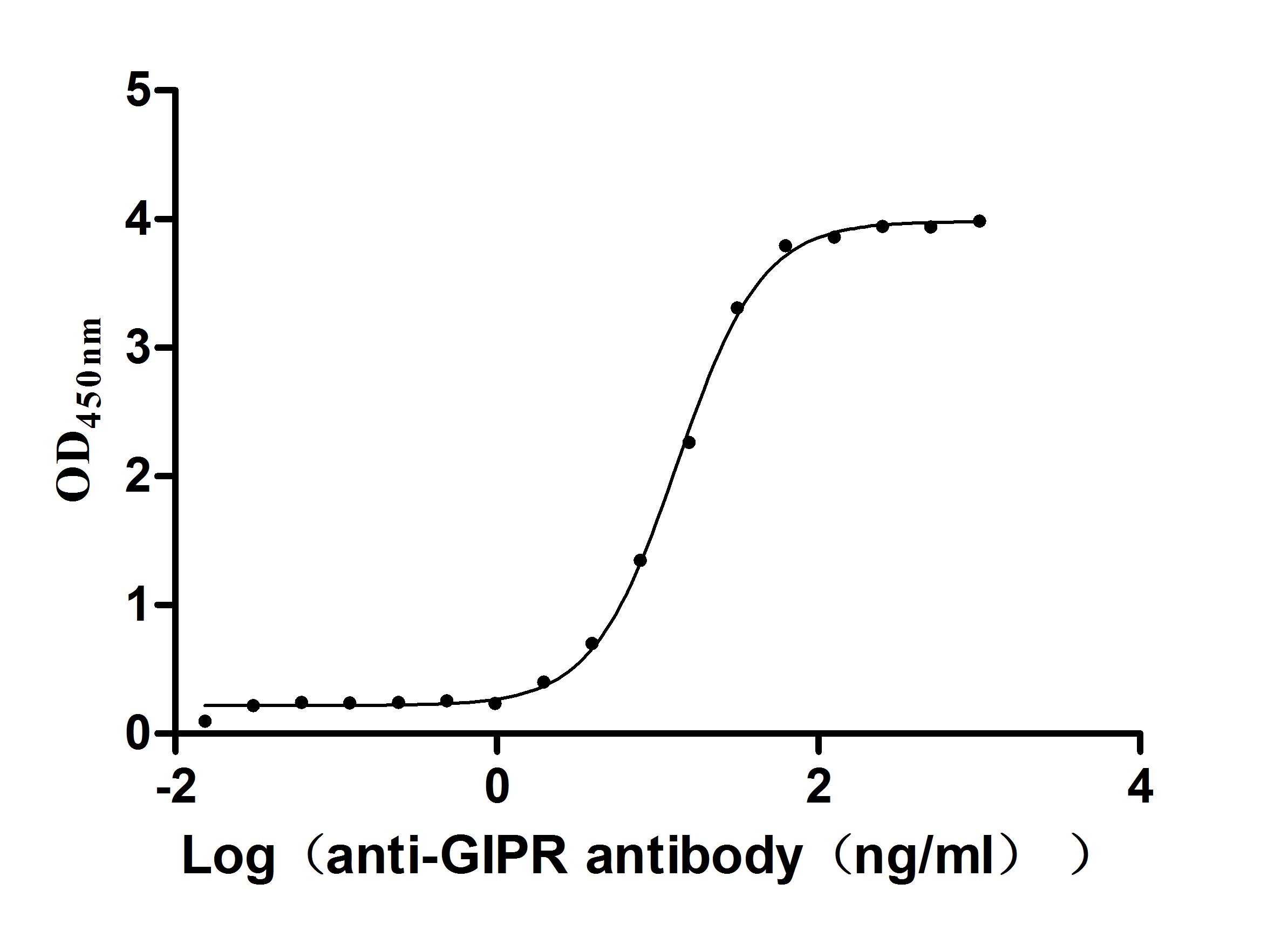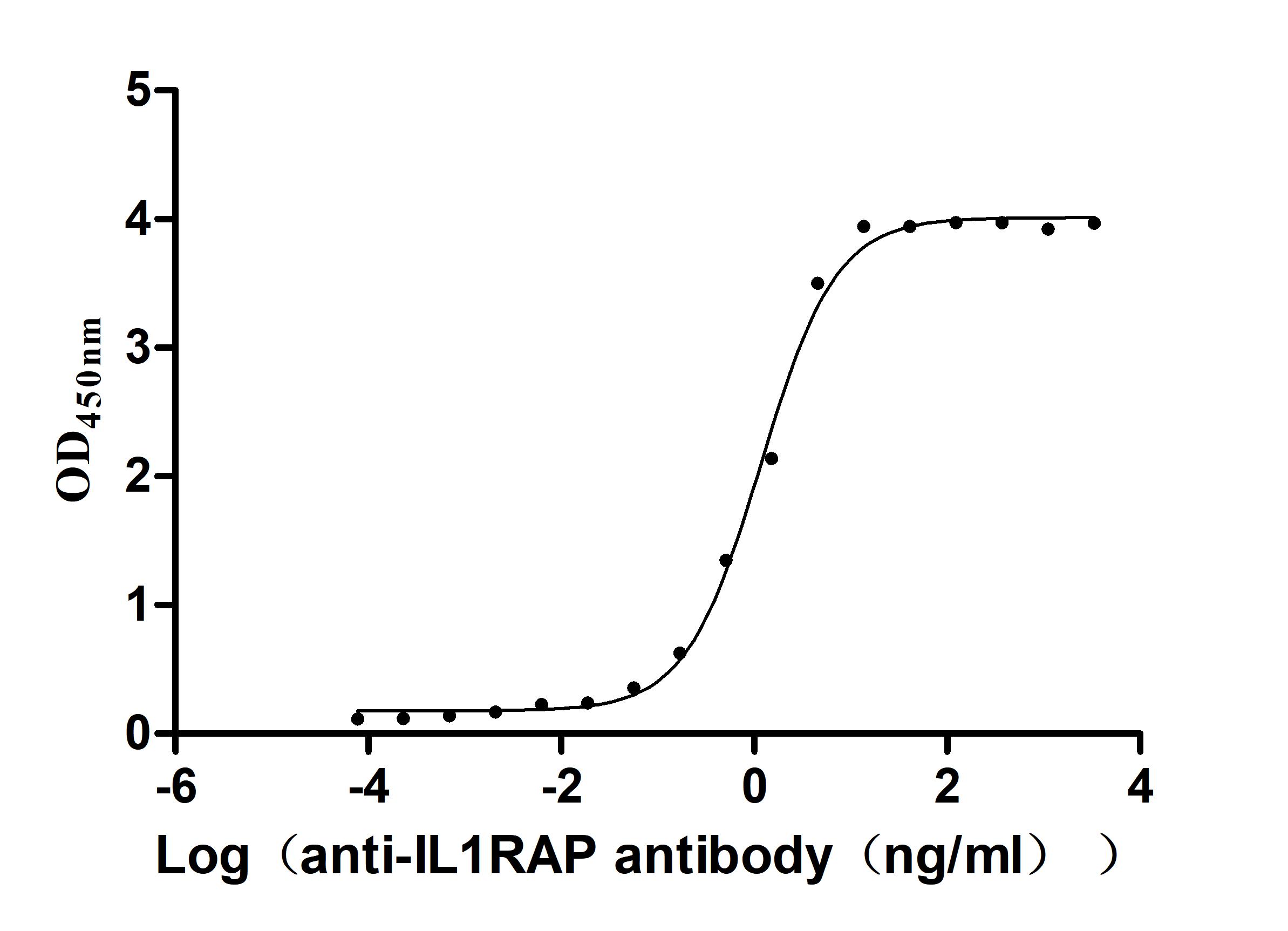Recombinant Drosophila melanogaster Protein trunk (trk)
-
中文名稱:黑腹果蠅trk重組蛋白
-
貨號:CSB-EP635517DLU-B
-
說明書:
-
規格:
-
來源:E.coli
-
共軛:Avi-tag Biotinylated
E. coli biotin ligase (BirA) is highly specific in covalently attaching biotin to the 15 amino acid AviTag peptide. This recombinant protein was biotinylated in vivo by AviTag-BirA technology, which method is BriA catalyzes amide linkage between the biotin and the specific lysine of the AviTag.
-
其他:
產品詳情
-
純度:>85% (SDS-PAGE)
-
基因名:trk
-
Uniprot No.:
-
別名:trk; CG5619; Protein trunk
-
種屬:Drosophila melanogaster (Fruit fly)
-
蛋白長度:Full Length of Mature Protein
-
表達區域:20-226
-
氨基酸序列A QDDADYCAEL STQSLAKILG QAFNPRYMSI DPPGEPEEKS YHLGYKRSSY ELPFYADSDA ISVSHFPAWE TNHFALVEKK KEAPRSKSLR TRSAFMDRVG HPRIDGFKQR PWECSSKINW IDLGLNYFPR YIRSIECIAR KCWYDHFNCK PKSFTIKVLR RKTGSCIRIN DKLILITAEK FENDYTQLWI WEEIAVNFCC ECVMLY
-
蛋白標簽:Tag?type?will?be?determined?during?the?manufacturing?process.
The tag type will be determined during production process. If you have specified tag type, please tell us and we will develop the specified tag preferentially. -
產品提供形式:Lyophilized powder
Note: We will preferentially ship the format that we have in stock, however, if you have any special requirement for the format, please remark your requirement when placing the order, we will prepare according to your demand. -
復溶:We recommend that this vial be briefly centrifuged prior to opening to bring the contents to the bottom. Please reconstitute protein in deionized sterile water to a concentration of 0.1-1.0 mg/mL.We recommend to add 5-50% of glycerol (final concentration) and aliquot for long-term storage at -20℃/-80℃. Our default final concentration of glycerol is 50%. Customers could use it as reference.
-
儲存條件:Store at -20°C/-80°C upon receipt, aliquoting is necessary for mutiple use. Avoid repeated freeze-thaw cycles.
-
保質期:The shelf life is related to many factors, storage state, buffer ingredients, storage temperature and the stability of the protein itself.
Generally, the shelf life of liquid form is 6 months at -20°C/-80°C. The shelf life of lyophilized form is 12 months at -20°C/-80°C. -
貨期:Delivery time may differ from different purchasing way or location, please kindly consult your local distributors for specific delivery time.Note: All of our proteins are default shipped with normal blue ice packs, if you request to ship with dry ice, please communicate with us in advance and extra fees will be charged.
-
注意事項:Repeated freezing and thawing is not recommended. Store working aliquots at 4°C for up to one week.
-
Datasheet :Please contact us to get it.
靶點詳情
-
功能:Required for activity of the tor receptor, could be a ligand of tor. Involved in specifying terminal body pattern.
-
基因功能參考文獻:
- Torso interacts with both Trunk and Torso-like, which cooperate to mediate dimerization and activation of Torso at the ends of the Drosophila embryo PMID: 28087630
- Present and other previous studies, suggest that the function of Tsl is to mediate secretion of Trk, thus providing the mechanism for spatially restricted activation of Tor in Drosophila embryos. PMID: 26508274
- Data favours a scenario where Tsl functions post proteolytic processing of Trk to control localized terminal patterning. PMID: 24584029
- Extracellular processing of the Trunk ligand at the anterior and posterior termini of the developing embryo activates the signaling pathway that defines the two ends. PMID: 11752676
-
亞細胞定位:Secreted.
-
蛋白家族:Noggin family
-
數據庫鏈接:
Most popular with customers
-
Recombinant Human IGF-like family receptor 1 (IGFLR1), partial (Active)
Express system: Mammalian cell
Species: Homo sapiens (Human)
-
Recombinant Human Trophoblast glycoprotein (TPBG), partial (Active)
Express system: Mammalian cell
Species: Homo sapiens (Human)
-
Recombinant Macaca fascicularis Gastric inhibitory polypeptide receptor (GIPR), partial (Active)
Express system: yeast
Species: Macaca fascicularis (Crab-eating macaque) (Cynomolgus monkey)
-
Recombinant Human Interleukin-1 receptor accessory protein (IL1RAP), partial (Active)
Express system: Mammalian cell
Species: Homo sapiens (Human)















